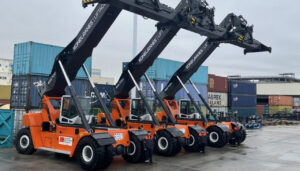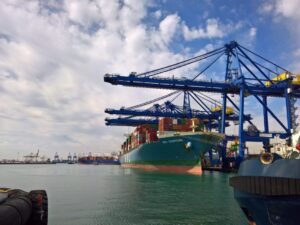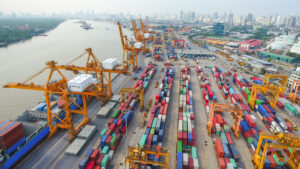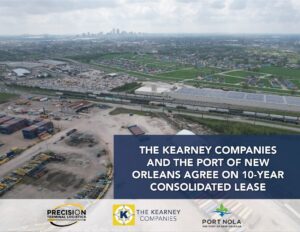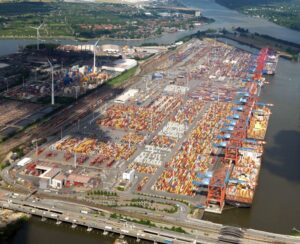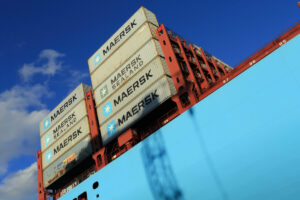Many ports globally are performing at a level where they are seeing a significant increase in their volumes year-on-year. China is an example of a country that is seeing around a 4-5% increase in container throughput at its ports each year, although in recent months the world’s largest, Port of Shanghai, saw flat volumes in June, 2015 as a result of slowing at overseas markets, suggesting a potential step-change in global economics.
The Middle East is also a region that is seeing high levels of productivity, with the Port of Jebel Ali recently achieving a world-leading 131 moves per ship per hour in 2014, in comparison to the 119 moves recorded in 2013. Haifa Port has also set a record for the number of container moves with 318.8 moves per ship per hour with its six ship-to-shore (STS) cranes.
While these achievements are undoubtedly impressive, the factors which underlie a productive port remain ambiguous and are not obvious. The reasons for high productivity at one port may be vastly different in the case of another. So how can productivity be defined in today’s industry?
Peter Ford, Chief Strategy Officer at Ports America and former CEO of Port of Salalah, believes that: “For terminal operators Productivity could mean a few things. Gross moves per hour (GMPH) that focuses on a crane’s ability to move containers over the quay wall each hour, berth moves per hour (BMPH), that focuses on thetotal number of containers that (ALL) cranes moved on/off a particular vessel each hour, or even man hours per move (MHPM) which refers to the efficient use of the total labour force required for the operation to move the containers across the quay wall.
To read a Technical Paper by Peter Ford on how terminals can tackle megaships, click here
(Source: Maersk / Facebook)
“From the customer’s perspective, while always happy to hear about high GMPH, there is more interest about how fast the vessel was able to be turned around in port. Their main focus was (and is) on BMPH. A fast GMPH terminal with only two cranes would not be the terminal of choice over an average terminal with a host of crane resources to deploy on a single shift. BMPH analysis, however, is more complex to all parties.”
While port productivity can be defined differently between terminal operators and customers, there is a general consensus that productivity can be greatly improved with the help of certain tools and initiatives, such as carrier-terminal collaboration, which can be a win-win situation for ports and shipping lines if joint-planning is implemented as a way of optimising cargo flows from end-to-end.
Oscar Pernia, Senior Director of Product Strategy at Navis, argues that: “The traditional view of port efficiency is focused on pure terminal operations rather than end-to-end port operations, because terminal operations typically account for 62% of the total port stay but there is still 38% of the port stay that vessels spend waiting for vessel services, berthing, steaming-in and out. This time could be significantly improved by better transparency, richer data exchange and more intelligent solutions assisting those processes.
To read a Technical Paper by Oscar Pernia on terminal productivity, click here
“When a carriers and terminals do something concrete to collaborate, it has a significant impact on vessel turn-around times and adaptability to operational changes. This has been proven at DP World Jebel Ali, DP World Southampton and with the Maersk Hub partnership with Algeciras and Tangiers. Take vessel stowage, the sooner the terminal can get the stowage plans the more time they have to plan and optimise their resources.”
(Source: iStock)
The richer data exchange that Mr Pernia describes could be achieved via the use of Big Data: the term used to describe the identification and analysis of data within a given company to improve overall performance. It could have significant application for ports and terminals to improve performance in the near future. For example, sensor data is raw information that could potentially be used to allow ports to create a predictive model for tracking the reliability of equipment parts and thereby look into whether a port needs to upgrade equipment and save on higher operational costs.
Oscar Pernia continued: “Port Authorities such as Rotterdam and Hamburg have initiated technology projects aiming to get the whole port more efficient. For ‘pit stop’ port operations the utilisation of generated data by VTS, AIS, TOS and other systems supporting vessel operations will be essential to optimise overall port performance and coordination across the different processes enabling the vessel port call.”
In summary, productivity is a term that holds many different meanings within the industry, not only between port and terminal operators, but between the operator and its customers, who each have their own opinions on the areas that require more focus in order to see greater results.
In an age where customer satisfaction is becoming more and more important, ports around the world must consider how they can increase total BMPH, and continue to optimise operations via the methods outlined in the article.


.jpg)
